Welcome to our comprehensive guide on attracting cardinals to your garden! In this article, we will explore 16 remarkable plants and trees that are known to entice these vibrant birds. Discover how you can create a cardinal haven right in your backyard with the help of nature’s allure.
About Cardinals
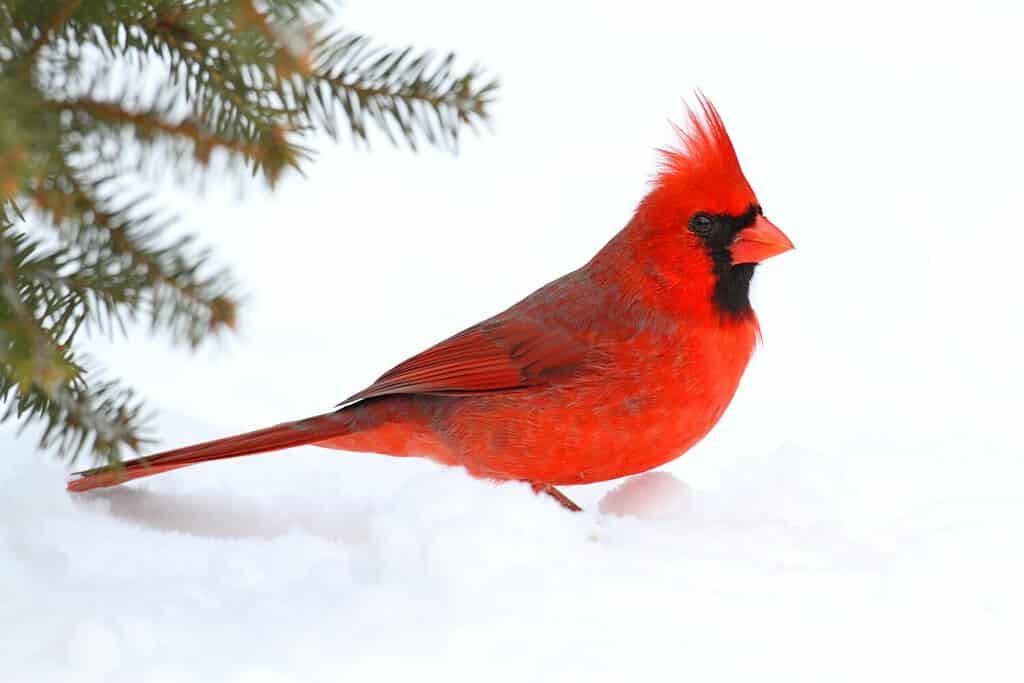
This beautiful bird has a diet full of many types of foods.
©Steve Byland/Shutterstock.com
Cardinals are a family of birds that can be found in a wide variety of habitats, including woodlands, scrublands, and even urban areas. They are known for their bright red feathers and distinctive calls. They are most common in the Eastern half of the United States.
Cardinals are socially monogamous and typically form pair bonds for one year or more. During the breeding season, they will establish a nesting territory and construct a nest from twigs, hair, strips of bark, grasses, and other plant materials. The nests are typically well-concealed in dense foliage and placed in a tree or bush. Cardinals build their nests between three and ten feet off the ground.
During the summer months, cardinals will often form flocks of up to 30 birds. These flocks can include other types of birds as well, and the members are continuously changing.
16 Plants and Trees That Attract Cardinals
Cardinals consume a wide variety of food items. Among them are insects, seeds, berries, fruits, and nectar from flowering plants. In addition, they sometimes utilize bird feeders. Their diet consists mainly of berries, seeds, and insects such as beetles, grasshoppers, caterpillars, flies, ants, spiders, centipedes, and snails. They also eat a large amount of vegetation, like weed seeds, grains, flowers, and leaf buds. The young cardinals are mainly nourished with insects.
1. Sunflower

Sunflowers top the list of plants and trees that attract cardinals.
©Mark Alexander/ via Getty Images
Cardinals are drawn to sunflowers because of the abundant nectar, seeds, and insects that they provide. Sunflowers produce large amounts of pollen and nectar that attract a variety of birds, including cardinals. The petals act as landing pads for the birds to rest on while they feed. Additionally, sunflower heads are full of nutritious seeds that cardinals love to eat! Cardigans can also use sunflower leaves as nesting material when building their nests.
2. Elderberry
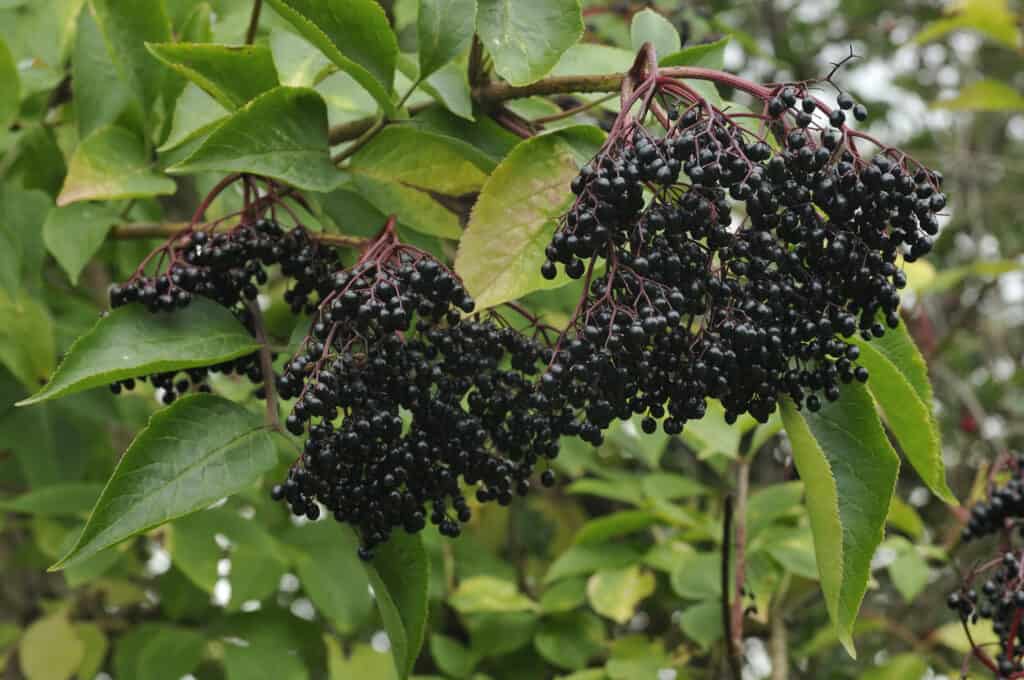
If you want a plant that attracts cardinals and other wildlife, consider an elderberry.
©Martin Fowler/Shutterstock.com
Elderberry (Sambucus) is a shrub that produces small white flowers and dark purple berries. The flowers are rich in nectar, which attracts bees, butterflies, and other pollinators. Cardinals love to feast on the berries during the late summer months when they ripen. Additionally, elderberry bushes provide cover for nesting cardinals as well as protection from predators. They also provide food for caterpillars, flies, ants, spiders, centipedes, and snails – which cardinals love to eat!
3. Serviceberry
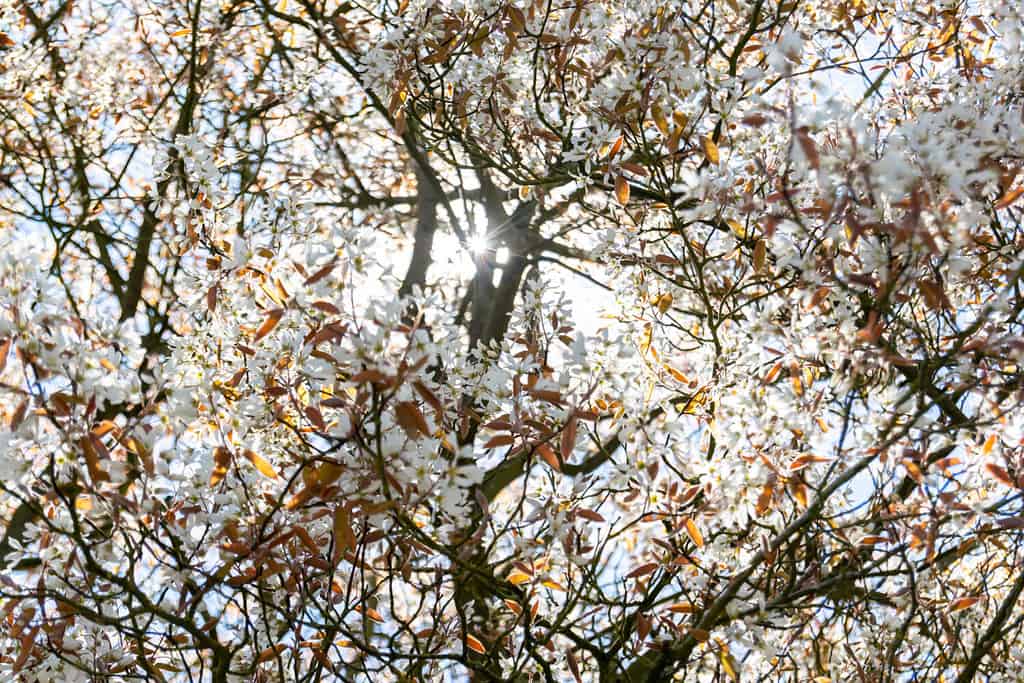
There are many types of serviceberries to choose from.
©Wirestock Creators/Shutterstock.com
Serviceberry (Amelanchier) is a small deciduous tree or shrub that produces white flowers in the spring and dark purple fruit in the summer. The tart-tasting berries are an excellent source of nutrition for birds, including cardinals. Cardinals love to feed on serviceberry fruits, which are full of vitamins and minerals. Additionally, serviceberries attract other insects such as bees, butterflies, beetles, and wasps – all of which provide food for cardinals! Serviceberries also provide a great nesting spot for cardinals, as well as cover from predators.
4. Red Mulberry
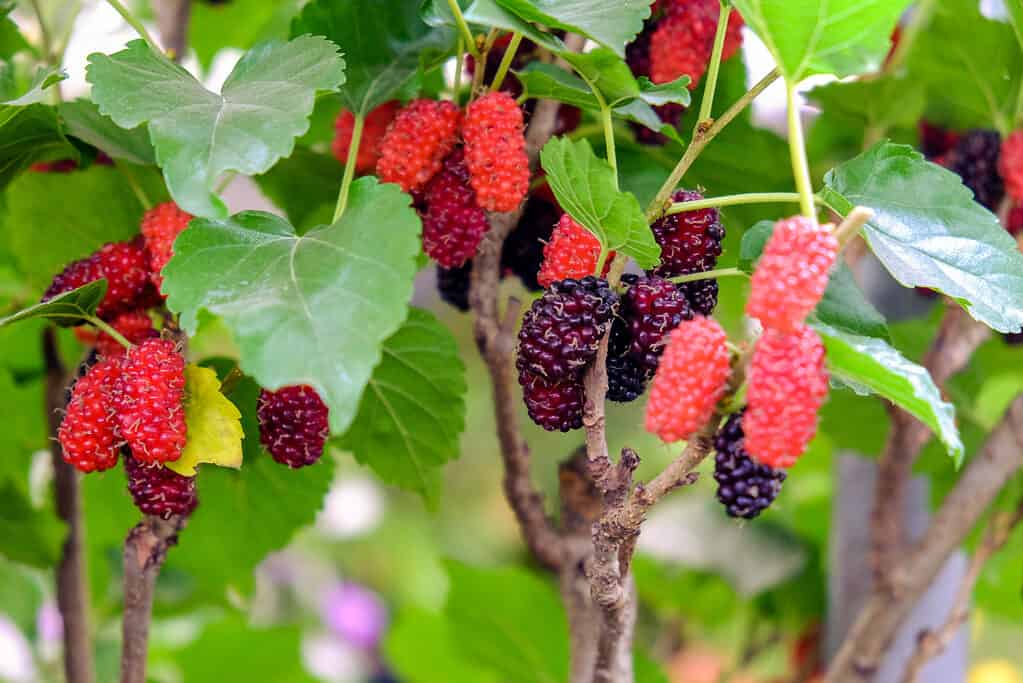
Mulberries are one of the best plants and trees that attract cardinals.
©Aunyaluck/Shutterstock.com
Red mulberry (Morus rubra) is a deciduous tree that produces sweet, tart berries from early summer to late fall. Cardinals love the sweet taste of these fruits and flock to them when they ripen. The dark red-colored berries are an excellent source of nutrition for cardinals as well as other birds such as robins, blue jays, woodpeckers, thrushes, and more. Red mulberries also provide cover from predators and nesting spots for cardinals.
5. Holly
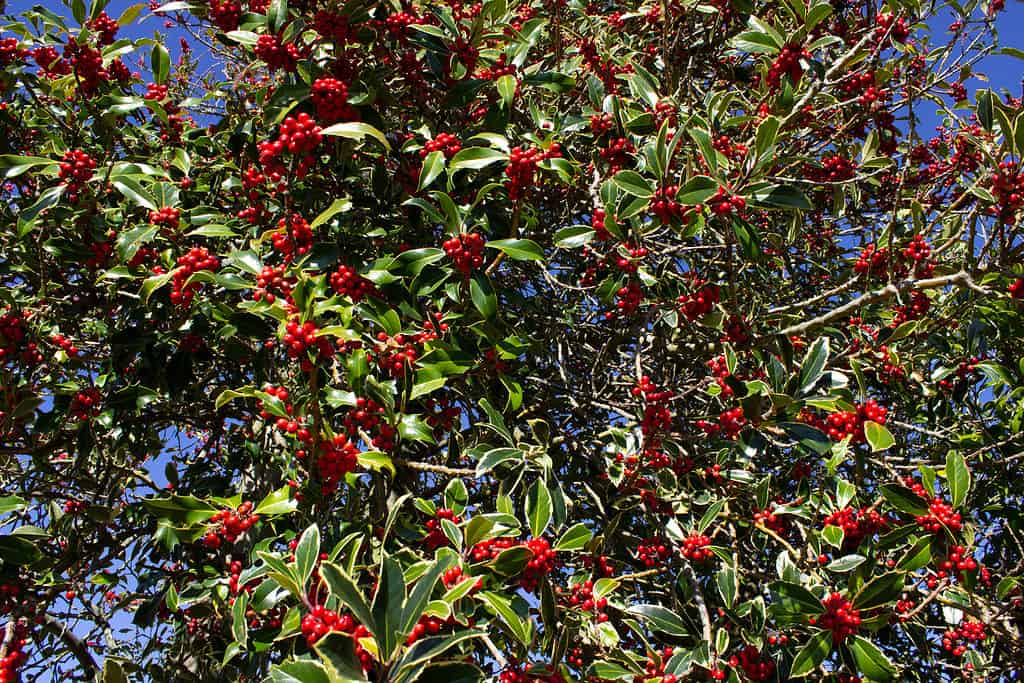
Because of their dense growth habit, holly trees make great nesting sites for cardinals.
©EveTravels/Shutterstock.com
American Holly (Ilex opaca) is an evergreen tree native to the eastern and southeastern United States. Cardinals are attracted to this tree because of its glossy, dark green leaves and dense growth habit, which provide shelter for them during cold weather. American holly also produces bright red berries from late fall through winter that cardinals love to eat. The tart-tasting berries are full of vitamins and minerals, making them a great source of nutrition for cardinals. Additionally, American Hollies attract other insects, such as spiders, moths, and butterflies, which provide a food source for cardinals.
6. Ash
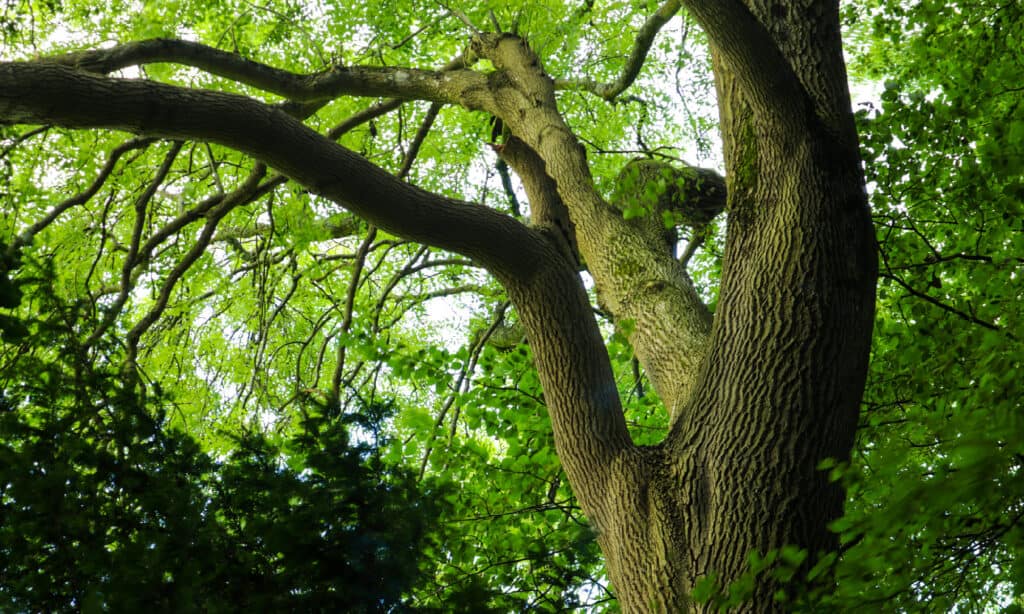
Many species of ash trees attract cardinals.
©iStock.com/Alex Montacute
Ash tree (Fraxinus spp.) is a genus of flowering plants in the olive family, and it includes species native to North America, Europe, and Asia. The most common type of Ash tree found in North America is the White Ash (Fraxinus americana). Cardinals are attracted to this tree because of its dark green compound leaves and clusters of small flowers that produce tan-colored fruits known as “keys” or samaras. These seeds provide an important food source for cardinals during the winter months, and they are a great source of nutrition for them. In addition to providing food, Ash trees also provide shelter from bad weather and predators. The dense foliage of an Ash tree is ideal for hiding, so cardinals can feel safe while nesting or feeding in its branches.
7. Birch
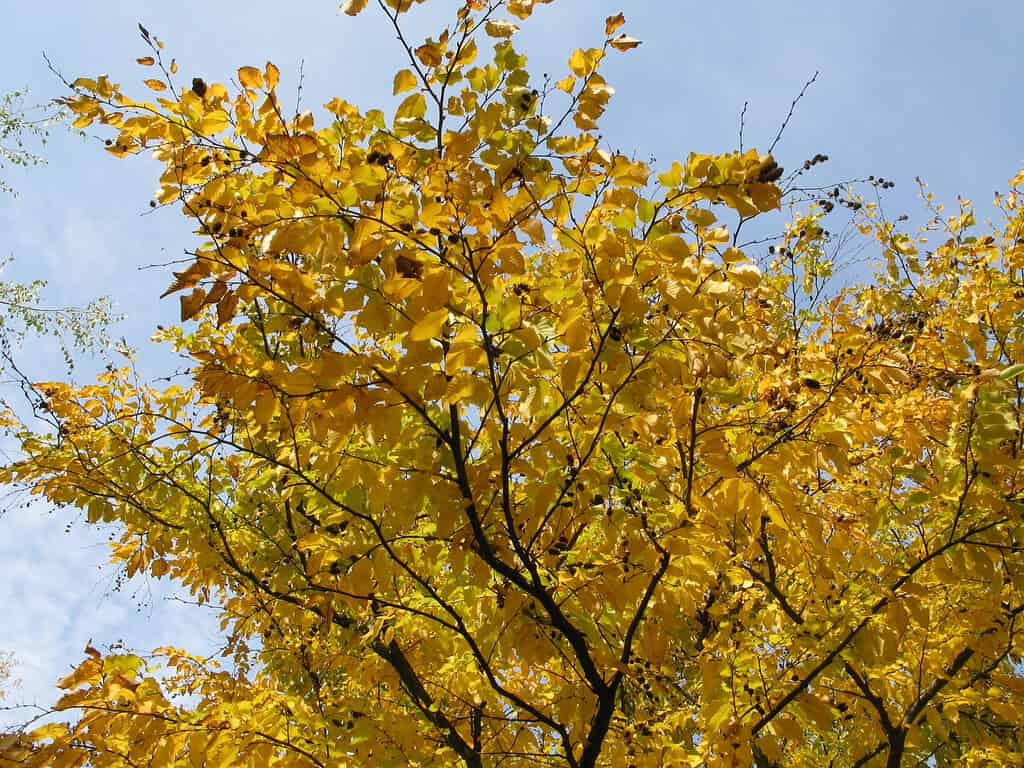
Sweet birch trees (Betula lenta) are great for attracting cardinals.
Birch (Betula spp.) is a genus of deciduous trees found throughout the Northern Hemisphere, and they are known for their white or silver-colored bark. Cardinals are attracted to birch trees because of their catkins – small, dangling clusters of flowers that hang from the tips of branches like ornaments. The female catkin produces tiny seeds that cardinals eat as part of their diet. In addition to providing food, birch trees also offer protection from predators and bad weather.
8. Common Juniper

You can grow common junipers as shrubs or small trees.
©iStock.com/beekeepx
Common juniper (Juniperus communis) is an evergreen shrub or tree that can grow up to 10 feet tall and is native to North America, Europe, and Asia. Cardinals are especially attracted to this species because of its small blue-black fruits known as “berries.” These berries provide a delicious food source for cardinals throughout the year, in addition to providing shelter from bad weather and potential predators. The dense foliage of common junipers offers great protection for nesting birds.
9. Crabapple

The lovely crabapple tree is one of the best plants and trees that attract cardinals.
©Igor Sirbu/Shutterstock.com
Crabapple trees (Malus species) are deciduous trees that produce small, sweet fruits. These fruits attract cardinals and other birds due to their high sugar content. In addition to providing food, crabapple trees offer protection from predators and bad weather for nesting birds. The dense foliage of these trees also provides shelter for a variety of animals, including squirrels, chipmunks, rabbits, bats, and raccoons. Their white or silver-colored bark is an attractive feature as well.
10. Eastern Red Cedar
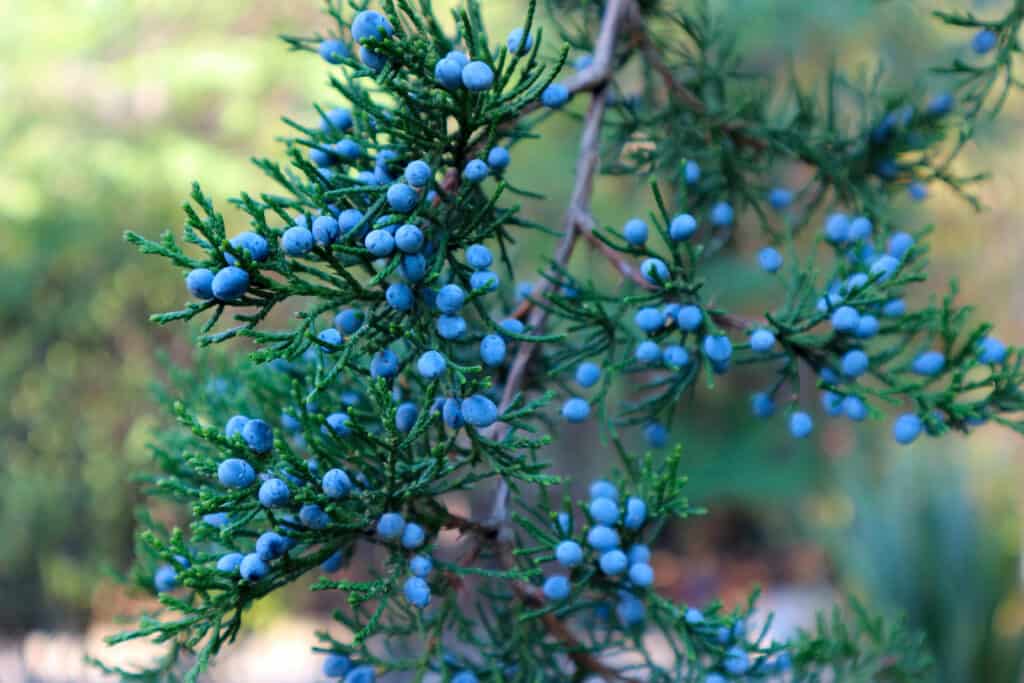
Cardinals aren’t the only animals that love juniper berries. Deer and pheasants eat them, too.
©iStock.com/Lyudmila Chetvertnykh
Eastern red cedar (Juniperus virginiana) is a species of juniper native to North America. It is also known as eastern juniper and red junper. It grows all over the eastern United States, Canada, and parts of Central America. Cardinals are especially attracted to this species because of its small blue-black fruits known as “berries.” These berries provide a delicious food source for cardinals. White-tailed deer, mule deer, and pheasants also rely on this plant for food.
11. Eastern White Pine
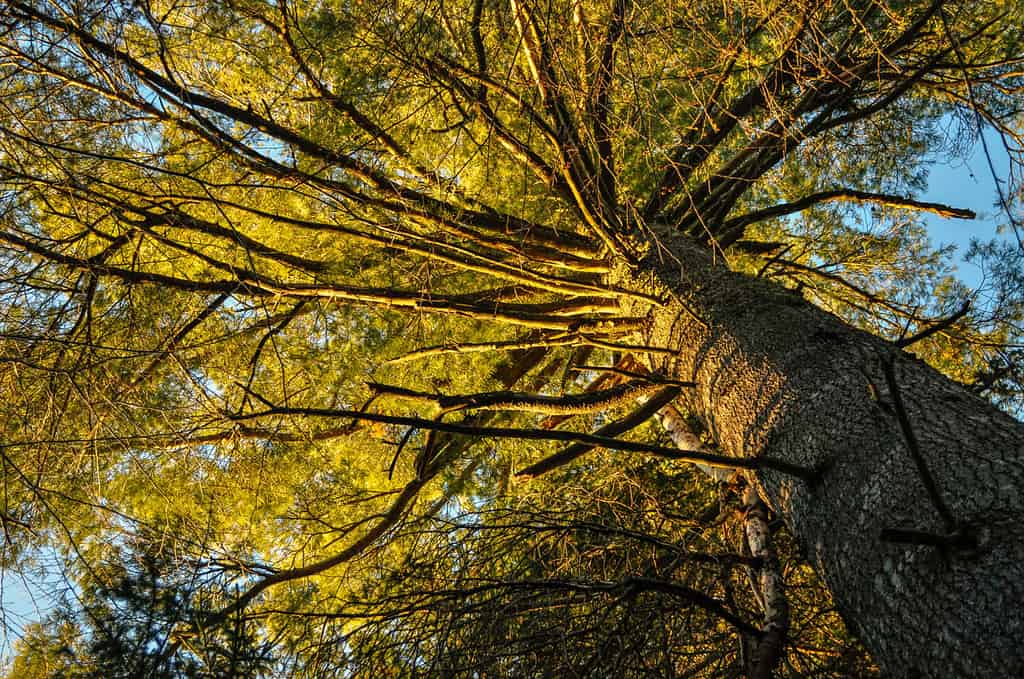
Cardinals love to build their nests in eastern white pine trees and eat the seeds.
©Bob Grabowski/Shutterstock.com
Eastern white pine (Pinus strobus) is a species of conifer native to eastern North America. It is one of the most widely distributed trees in the United States and Canada. The long, soft needles of this tree provide a cozy nesting site for cardinals and other birds. In addition, cardinals are attracted to its cone-shaped fruits, which contain seeds that are also enjoyed by animals such as cottontail rabbits, snowshoe hares, and songbirds.
12. Flowering Dogwood
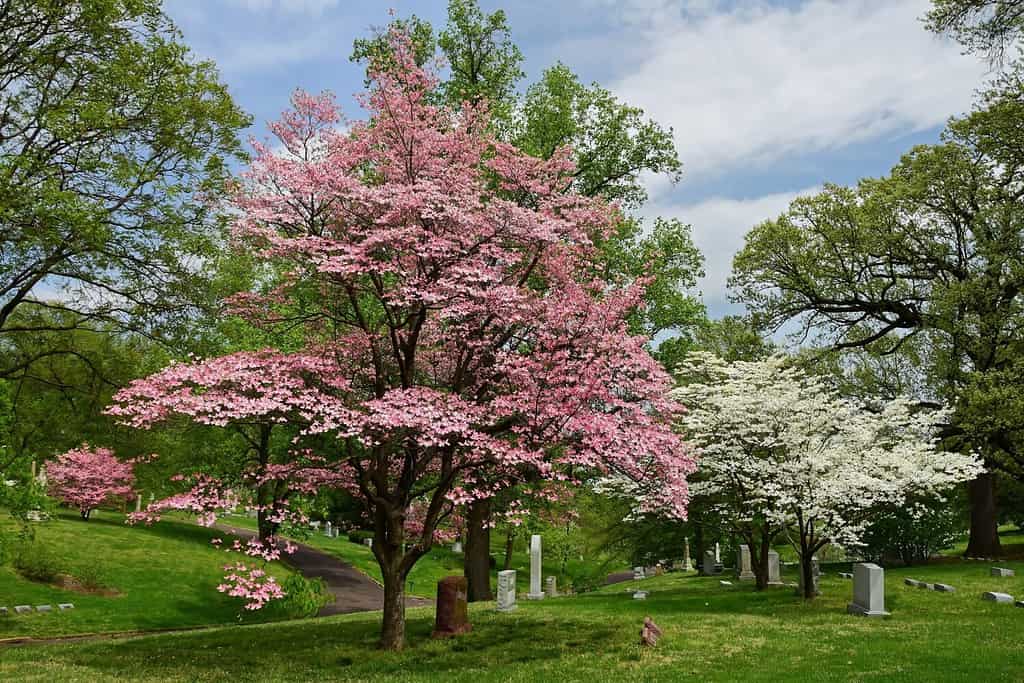
Many wild animals are attracted to dogwood blossoms.
©Nina B/Shutterstock.com
Flowering dogwood (Cornus florida) is an ornamental tree native to eastern North America. It has a rounded crown that features showy, four-petaled white, pink, or red flowers in spring and bright red fruit in summer. Cardinals love this species for its abundance of food sources. The small fruits are eaten by cardinals, bluejays, and other birds, while the flower buds are also enjoyed by squirrels and deer.
13. Hawthorn

The berries of hawthorn are sure to attract cardinals.
©iStock.com/mille19
Hawthorn (Crataegus sp.) is a large group of deciduous shrubs and small trees native to North America. It has an upright growth habit, with thorny branches that are covered in white or pink flowers in late spring. The fruits, which resemble tiny apples, are eaten by many species of birds, including cardinals. They also provide shelter and nesting sites for these birds. In addition, hawthorns can help attract beneficial insects such as bees, butterflies, and hummingbirds.
14. Hickory

This beautiful shagbark hickory produces edible nuts for cardinals and a sturdy nesting place.
©iStock.com/Ethan R.
Hickory (Carya spp.) is a deciduous tree native to eastern North America. It has an irregular, open canopy of branches and leaves that provide plenty of food sources for wildlife. The pinnately compound leaves are long and narrow, with serrated edges. In springtime, hickory trees produce small catkins, which later become edible nuts in the fall. These nuts are high in fat and protein content and make excellent food sources for cardinals as well as other birds. Additionally, quail, deer, raccoons, mice, foxes, and even hogs eat hickory nuts.
15. Northern Hackberry
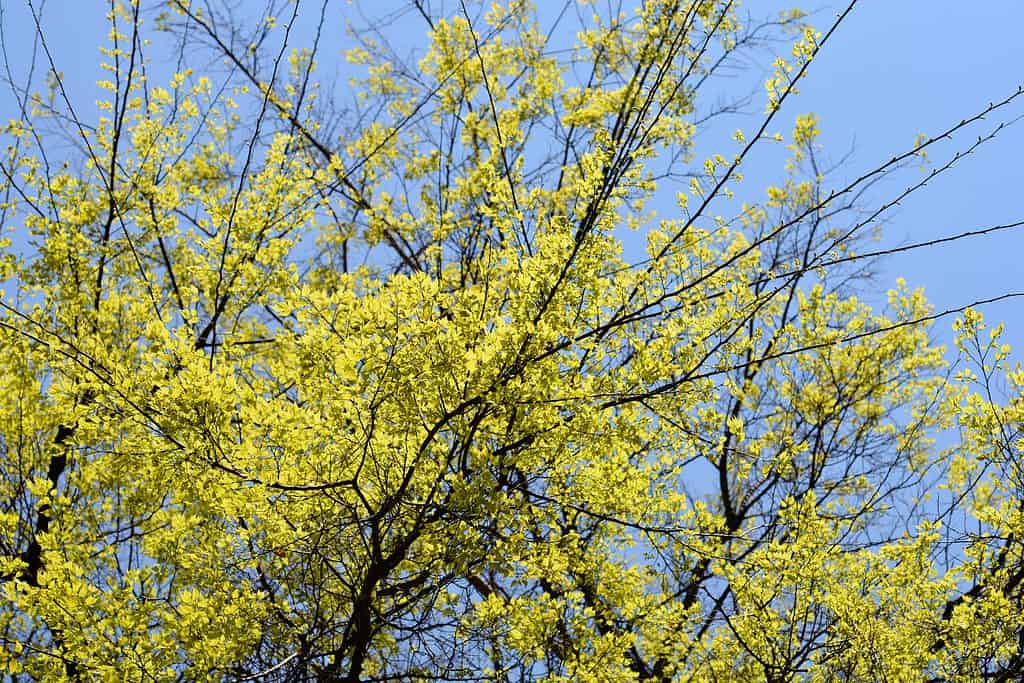
The hackberry is a versatile tree that can grow in various soil types and climates.
©Nahhana/Shutterstock.com
Northern hackberry (Celtis occidentalis) is a deciduous tree native to North America. It has a rounded crown and grows up to 60 feet tall, with long, oval-shaped leaves and an attractive mottled bark. In springtime, it produces small flowers that develop into sweet purple or yellow fruits during the autumn months. These fruits are eaten by many species of birds, including cardinals. The dense foliage provides excellent protection for nesting sites as well as shelter from predators. Additionally, many birds, such as mockingbirds, robins, and cedar waxwings, eat the fruits. Hackberries are also host trees for many different butterflies, such as mourning cloaks, tawny emperors, and American snouts.
16. Tulip Poplar
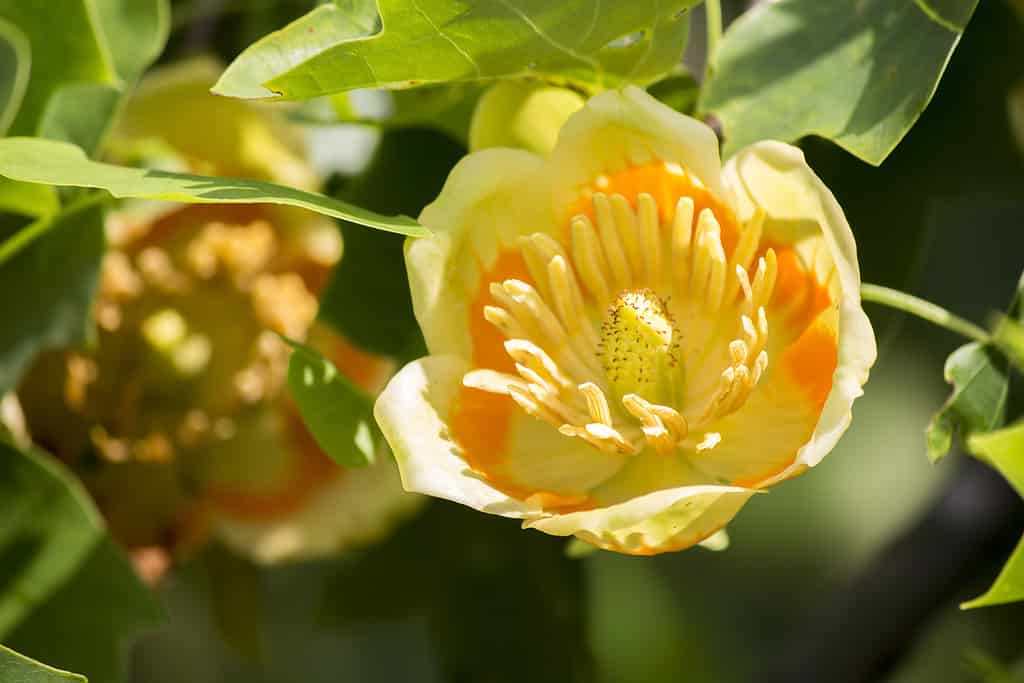
Now, what cardinal wouldn’t be attracted to this gorgeous blooming tulip poplar?
©iStock.com/Jim Still-Pepper
Tulip poplar (Liriodendron tulipifera) is a deciduous tree native to Eastern North America. It can grow up to 90 feet tall with an open, rounded crown of light green leaves that turn yellow in the fall. In springtime, it produces large, distinctive flowers in shades of yellow or orange that resemble tulips, giving rise to its name. These flowers are full of pollen and nectar for hummingbirds, bees, and butterflies. Cardinals are attracted to the sweet nectar produced by these blooms and also consume the high-fat seeds throughout the winter. Additionally, white-tailed deer eat the leaves of tulip poplars all year. The seeds are a favorite food for squirrels, cottontails, purple finches, and Northern bobwhites.
The photo featured at the top of this post is © David Spates/Shutterstock.com
Thank you for reading! Have some feedback for us? Contact the AZ Animals editorial team.







